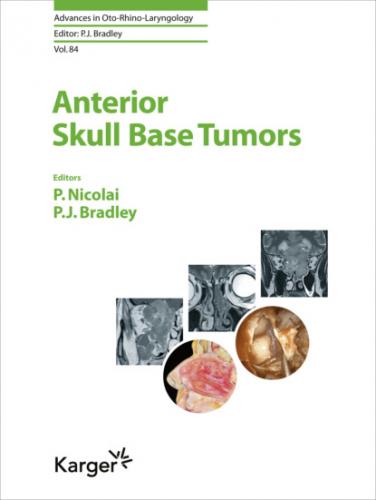Differential Diagnosis
The main differential diagnoses include enchondroma, osteochondromas, chondroblastic osteosarcoma, and chordomas. Mesenchymal chondrosarcoma should be differentiated from other malignant spindle cell tumours. CD99 and SOX9 markers are typically positive in mesenchymal chondrosarcoma and can be used in the diagnosis of this entity.
Osteosarcoma
Osteosarcoma is a rare tumour in the skull base region, which most commonly represents an extension of maxillary origin. Grossly, osteosarcoma manifests as an ill-defined, irregular, and tan-yellow tissue mass with gritty (bone) sensation. Histologically, these tumours exhibit malignant cellular proliferation with osteoid bone formation. The degree of cellularity and anaplastic cellular features reflect the grade of the lesions. The most common type of osteosarcoma is the osteogenic phenotype [81, 82]. Chrondroblastic and fibroblastic variants are also encountered.
Differential Diagnosis
The differentiation of this entity from other bone-forming lesions, including osteoblastoma requires combined radiologic and histopathologic evaluation.
Biphenotypic Sinonasal Sarcoma
This is a recently described low-grade spindle cell sarcoma, which occurs in the nasal cavity and ethmoid [83, 84]. Histologically, the tumour displays spindle cell proliferation with intersecting fascicles and a herringbone pattern. Similar to synovial sarcoma, markers that may be used to assist diagnosis are S-100 and SMA. Biphenotypic spindle cell sarcoma is characterised by distinctive phenotypic features and the presence of translocation t(2;4)(q35;q31.1) PAX3-MAML3 gene fusion. The cardinal morphologic features include neural and myogenic differentiation. This is a low-grade malignancy prone to local recurrence, but no reports of metastasis or death due to disease have been published [85–88].
Chordoma
Chordoma is a low- to intermediate-grade malignant neoplasm originating from the notochord. Base of skull involvement occurs through the sphenoid occipital region, which is the site for approximately 20% of all chordomas. Chordomas of the head and neck region frequently affect patients in the 5th and 6th decades of life [89–93]. Patients typically present with neurological symptoms, headache, and progressive pain. Grossly, chordoma characteristically presents as a lobulated myxoid, expansive mass with mucous, and a slippery appearance. Histologically, chordoma is divided into classic, chondroid, and dedifferentiated phenotypes. The classic type is characterised by a lobulated growth pattern with cords and islands of polygonal and vacuolated cells in a myxomucoid background. The characteristic vacuolated and eosinophilic cell is called a physaliphorous cell. The chondroid type manifests the same features along with areas of hyaline cartilaginous tissue. Dedifferentiation signifying transformation to a high-grade sarcoma shows marked cytologic atypia and high cellularity.
Differential Diagnosis
Chordoma should be differentiated from mucinous adenocarcinoma, myxoma, and cartilaginous neoplasms. The use of immunohistochemical stains will typically aid in the diagnosis. In particular, the reactivity to keratin and EMA are helpful in the exclusion of chondrosarcoma. Chordoma is characteristically immunoreactive to cytokeratin and S-100.
Soft Tissue Tumours: Benign and Borderline Tumours
Fibromatosis
Fibromatosis is a histologically ill-defined benign proliferation of bland spindle cells and collagenous stroma. This entity is slowly growing and invasive in nature. Complete excision with negative margins is often difficult to achieve [94–97].
Epithelioid Haemangioendothelioma
This entity is very rare but may lead to challenges in differential diagnosis. The epithelial-like cellular features may erroneously orient towards an epithelial malignancy. The finding of intracytoplasmic vascular features aided by immunohistochemistry is critical to a timely diagnosis. These tumours display a low-grade malignant behaviour and should be completely excised [98–102].
Meningioma
The majority of meningiomas of the skull base sites are typically an extension from an intracranial primary. Primary meningiomas are rare and most likely arise from ectopic meninges and arachnoid cell rests of cranial nerve sheaths. An origin at the transition between endoneurium of the olfactory nerve and cribriform plate has also been suggested.
At histology, skull base extracranial meningiomas are morphologically identical to their intracranial counterpart, but tend to be locally invasive, frequently showing characteristic whirling. They are typically meningothelial or fibroblastic, but other types may also be found [103–106].
Angiofibroma
Angiofibroma is a benign vascular lesion that typically affects young males within the age range from 9 to 18 years. The epicentre of the lesion is located at the level of the pterygopalatine fossa, but extension to the skull base is observed in 20–25% of patients. Angiofibroma commonly appears at nasal endoscopy as a hypervascularised polypoid lesion with well-defined margins and no presence of necrotic areas. Hormonal aetiology may play a role in its development. Histologically, angiofibroma is made by numerous thin-walled vessels of varying shapes and sizes embedded in a collagenous tissue.
Neuroectodermal Neoplasms
These tumours are of neuroglial origin and manifest as a primitive small cell growth. This morphologic similarity may lead to misclassification. The most frequently encountered entities at the skull base are olfactory neuroblastoma and the primitive neuroectodermal group of tumours.
Olfactory Neuroblastoma
This entity arises from neuroepithelium in the upper aspect of the nasal cavity and roof of the nose and the cribriform plate of the ethmoid sinus. Olfactory neuroblastomas comprise approximately 5% of sinonasal tract malignancies [107–109], and equally affect both genders with bimodal age clustering in the 1st and 2nd and the 4th and 5th decades of life. The tumour presents
